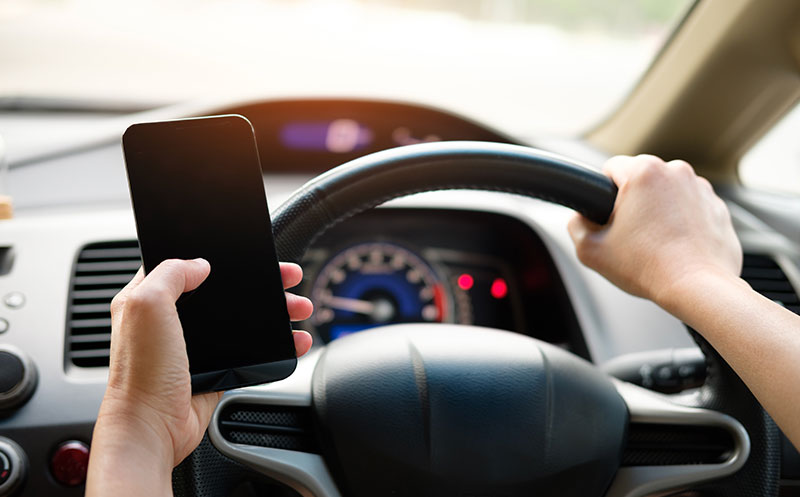Do you agree the most effective way to stop the use of mobile phones while driving is to turn them off? Most people think so but very few actually do it. When in heavy traffic or stopped at traffic lights, drivers are even more likely to use their phones. It appears we still don’t grasp the real risks of using phones while driving.
The riskiest behaviour
Budget Direct research earlier this year found the main reason people use their phones while driving is because they feel safe and capable of doing so. They checked their phones at traffic lights because they thought being stationary made it safe.
New Australian Automobile Association (AAA) research, Driven to Distraction, sets out to understand distraction caused by using mobiles while driving.
The AAA asked experts in 13 countries to compare mobile phone use with four other risk factors: speeding, fatigue, smoking marihuana or three alcoholic drinks. They ranked the risk of a crash on a scale where higher numbers mean more risk.
The riskiest behaviour was clearly holding a phone and looking at the screen for more than 2 seconds. For under 26s:
- Holding phone and looking at screen for 2+ secs was 3.8 times riskier (3.5 for age 26+)
- Fatigue was 3.6 times riskier (3.7 for age 26+)
- Driving after three alcoholic drinks was 3.4 times riskier (3.2 for age 26+).
The question is what causes young people to keep using their phones while driving?
Phone addiction
Some experts believe it is “phone addiction”: the driver can’t leave it alone. But the AAA study did not find this link. In fact, the most important factor was the driver’s intention to use their phone while driving.
Most young drivers are making an effort to stop using their mobiles and more than half in this study said they never use them illegally. They were more likely to use their phones if they saw their parents doing it. They also had different ideas on what “using your phone” means while driving.
Drivers over 26 were less likely than those under 26 to use their phones illegally.
Sitting at traffic lights
As in the Budget Direct study, sitting at traffic lights or in heavy traffic seems to act as a signal to change the rules. At traffic lights:
- 82% use entertainment or relaxation apps (74% in moving traffic)
- 75% of young drivers call or text (59% in moving traffic)
- 24% use social media.
Even in moving traffic, this type of phone use was still worryingly high. Young drivers are much more likely than those over 26 (74% v 41%) to hold their phones in moving traffic to use apps for entertainment or relaxation.
The new drink driving
One way to approach the problem is by appealing to people’s morals. Drink driving is now considered unsocial and immoral. It could be just as effective to convince people it’s morally wrong to use their phones while driving. Using phones is the new drink driving.
Another approach is to encourage people to follow through on what they already know. While 56% of drivers believe switching off their device is effective, only 7% of drivers actually do it.
The AAA has launched two tools for young drivers, Risk Rater and Plan Builder. Risk Rater compares their view of different risks while driving with expert views. Plan Builder helps them identify when they are tempted to use the phone and to find their own alternatives.
Meanwhile, fines of $344, $457 in a school zone and 5 demerits, offer a deterrent next time you sit at traffic lights.


your opinion matters: